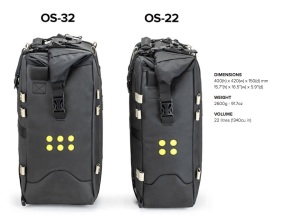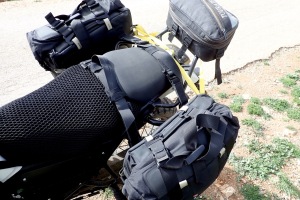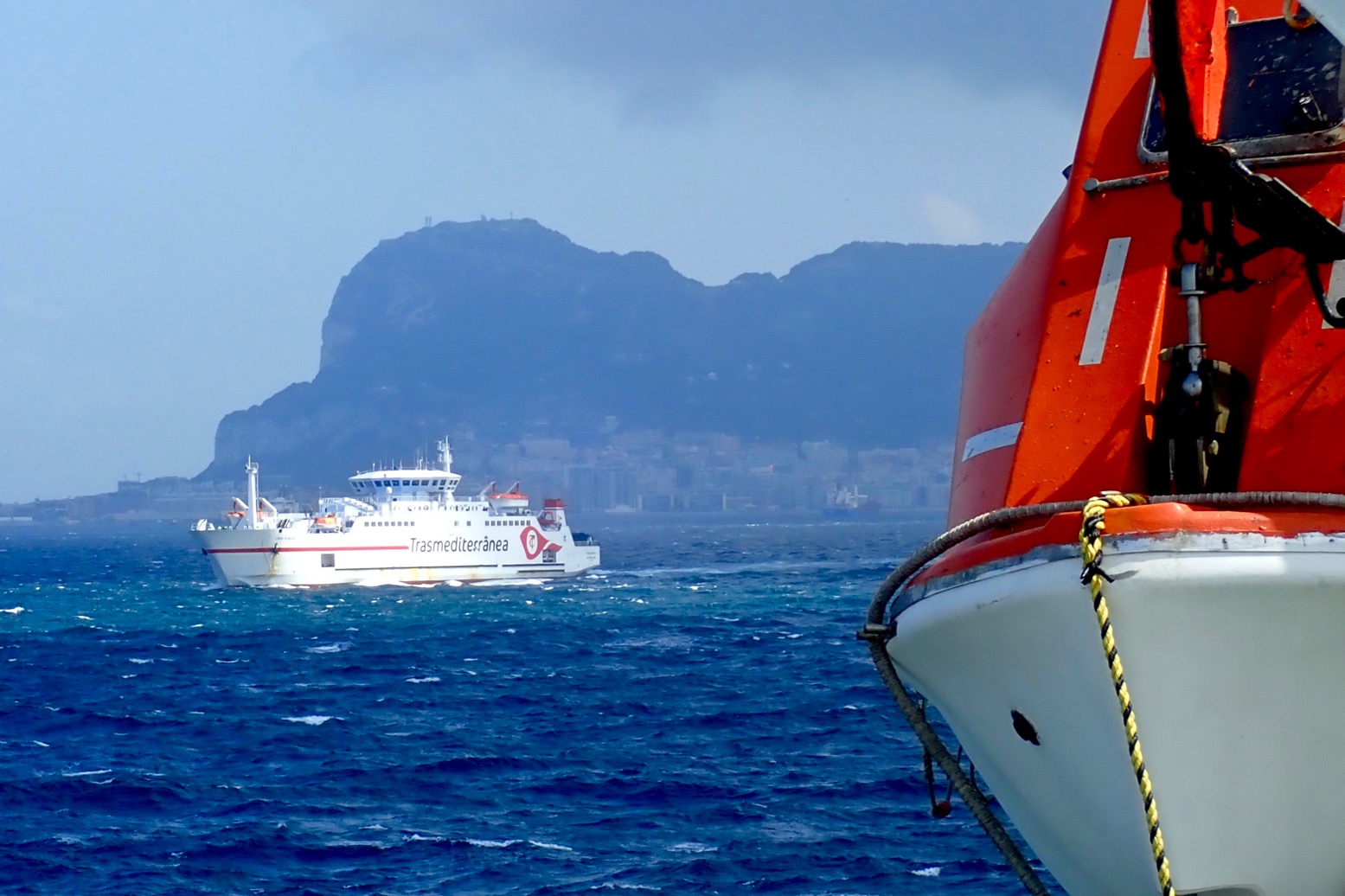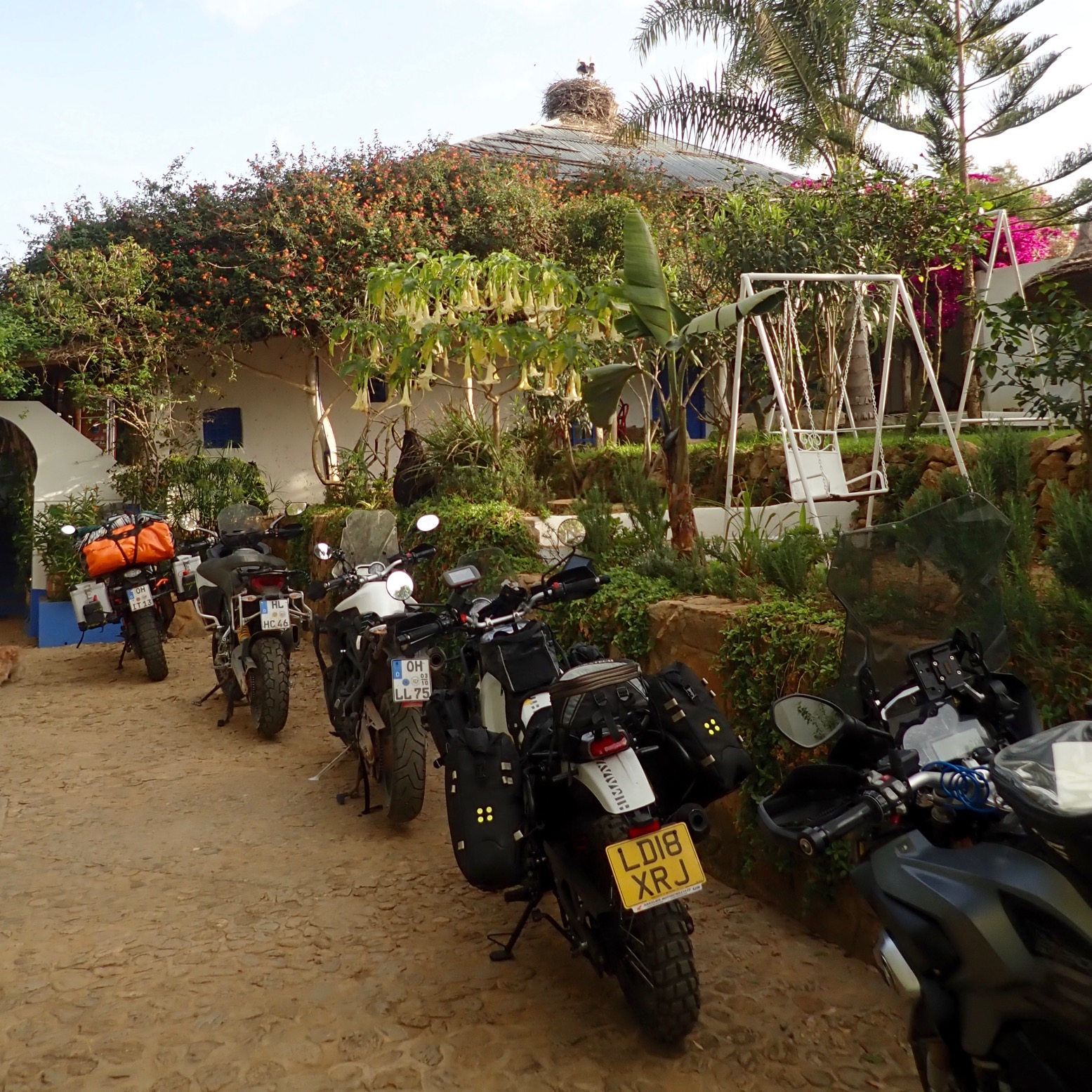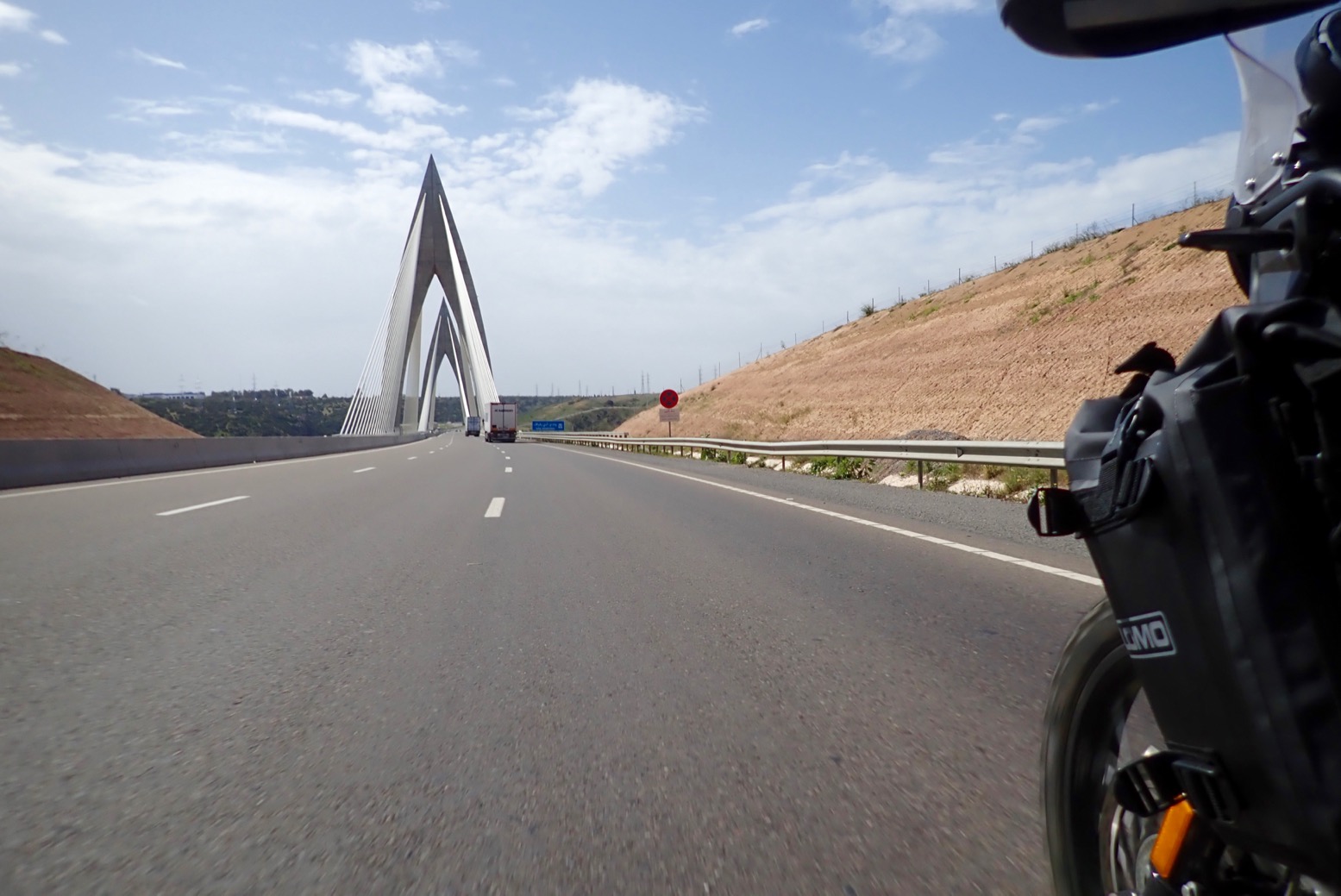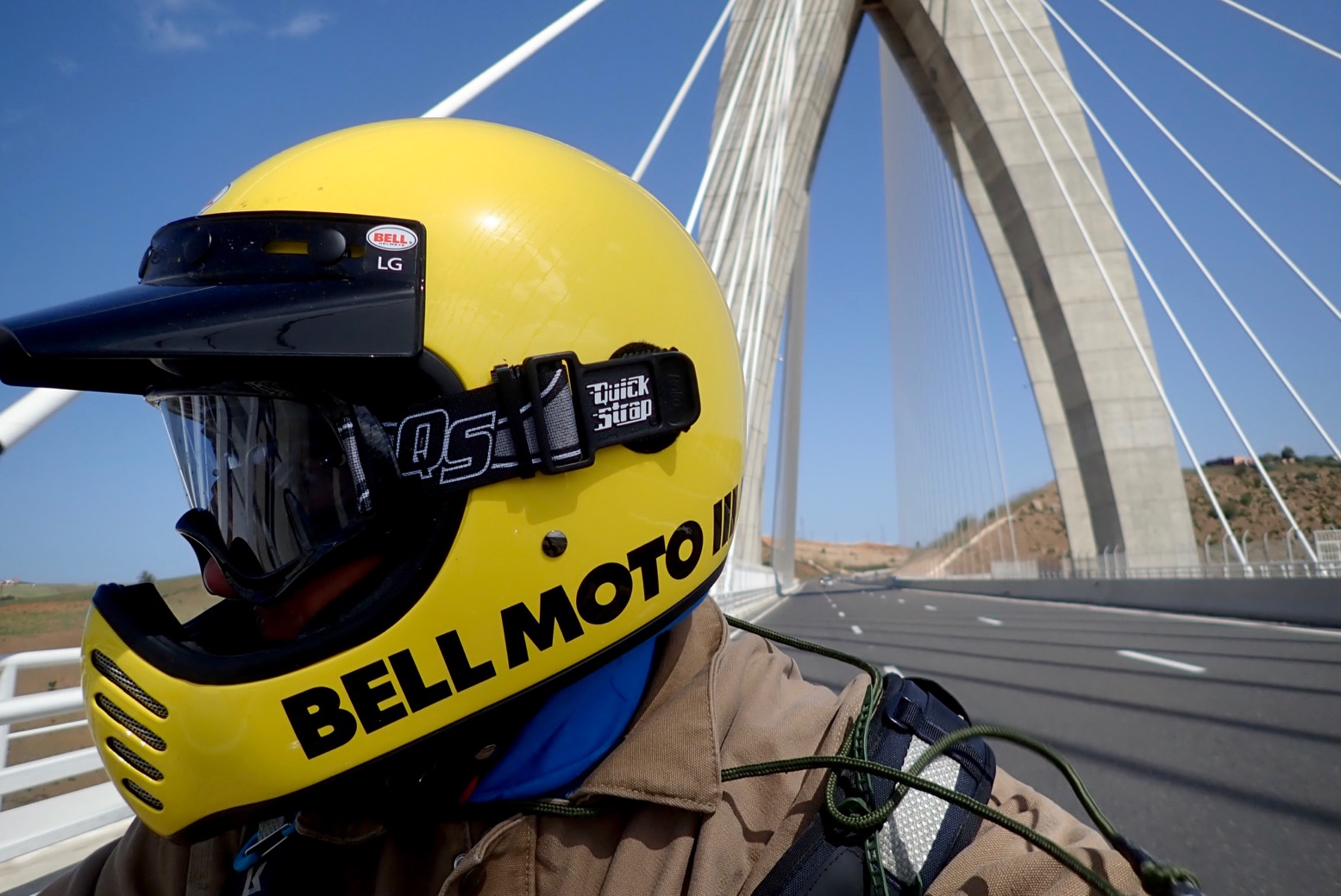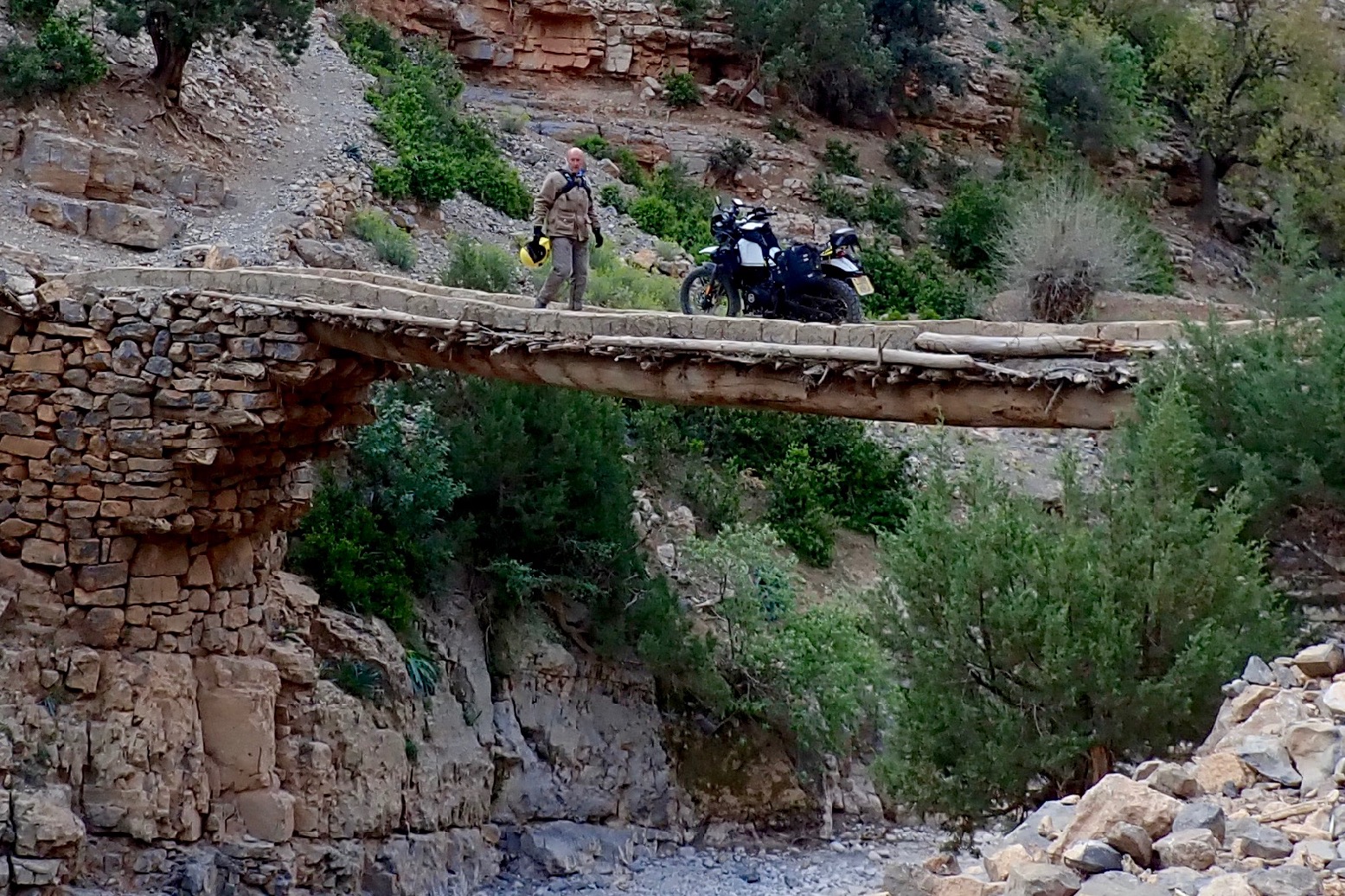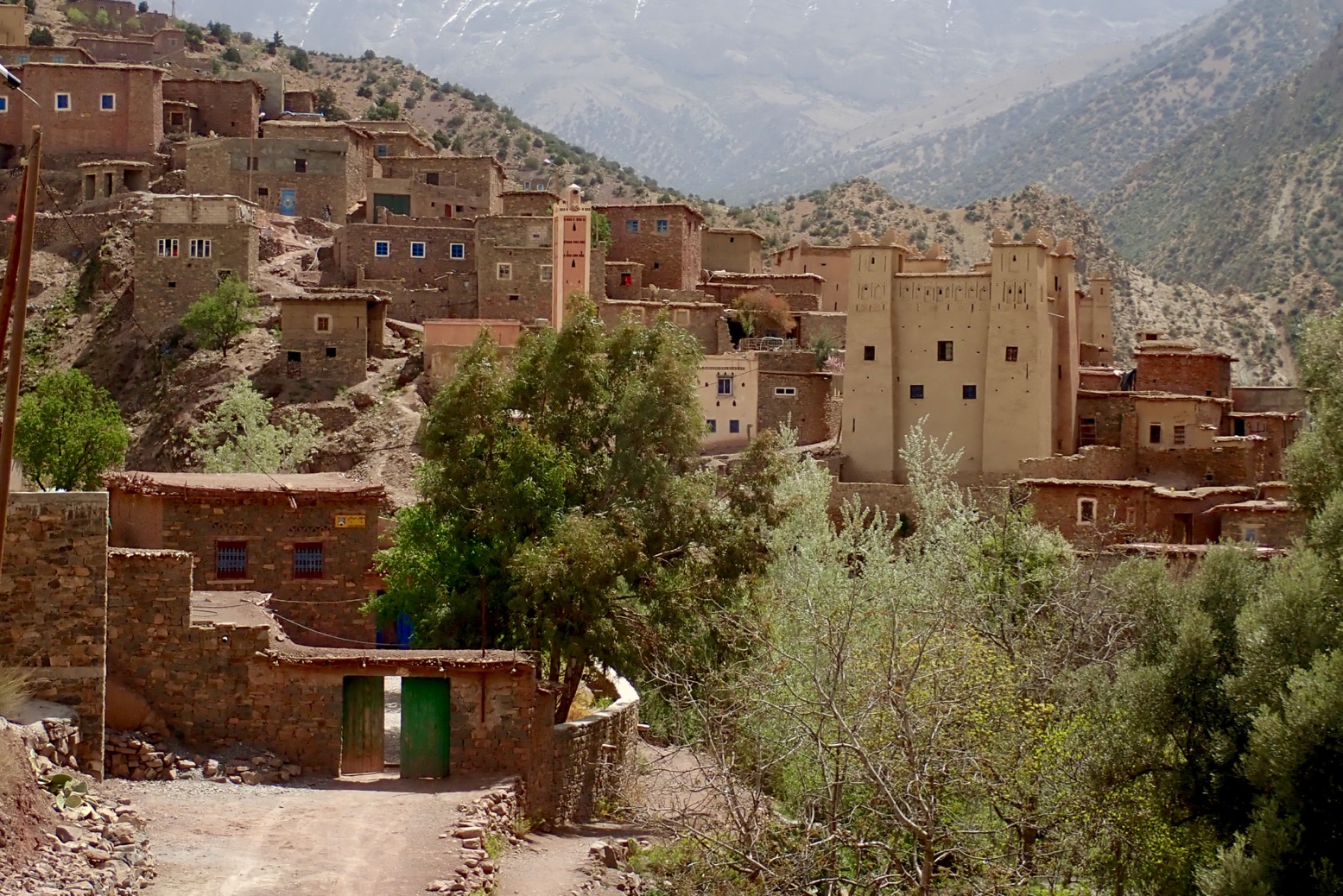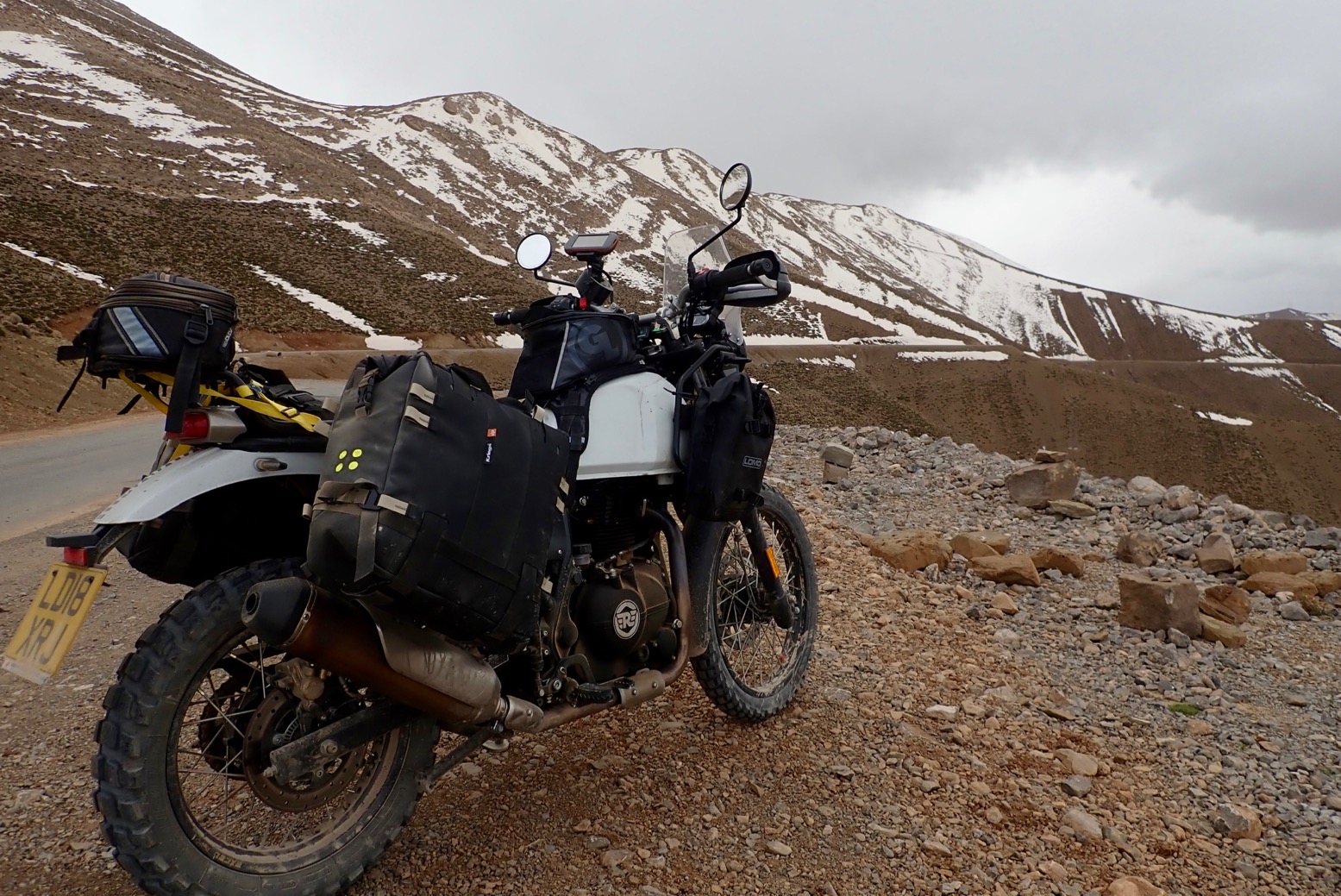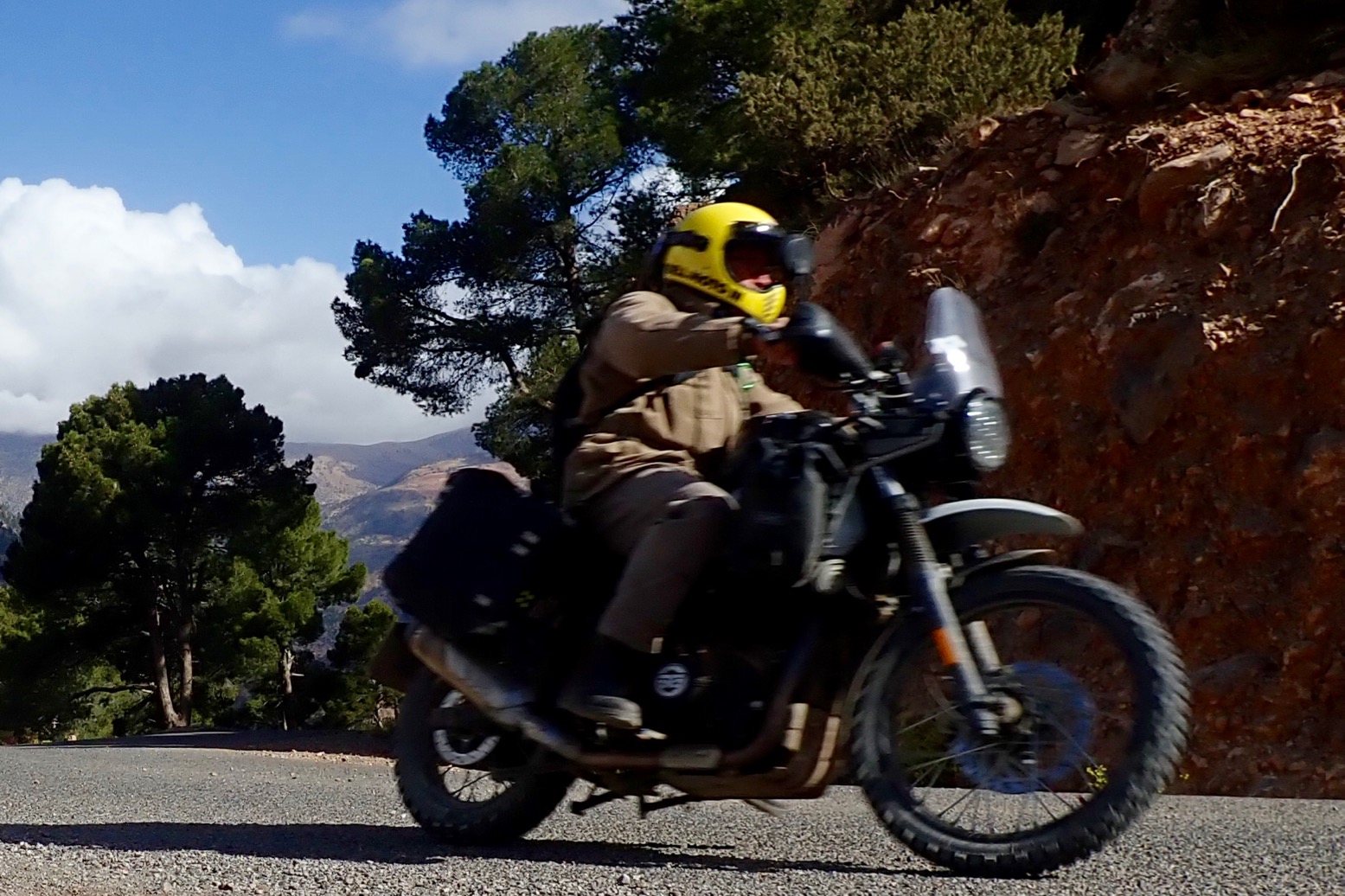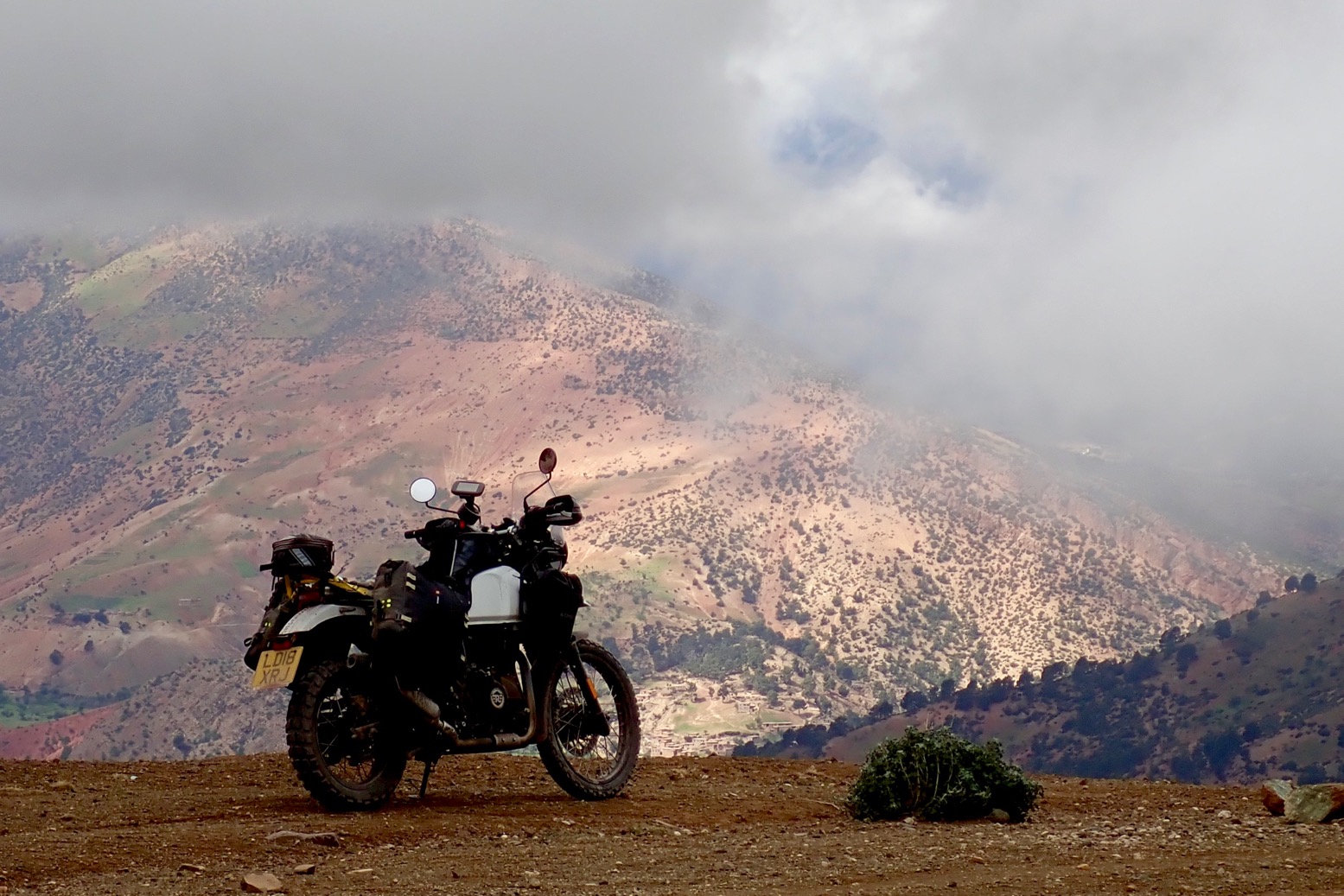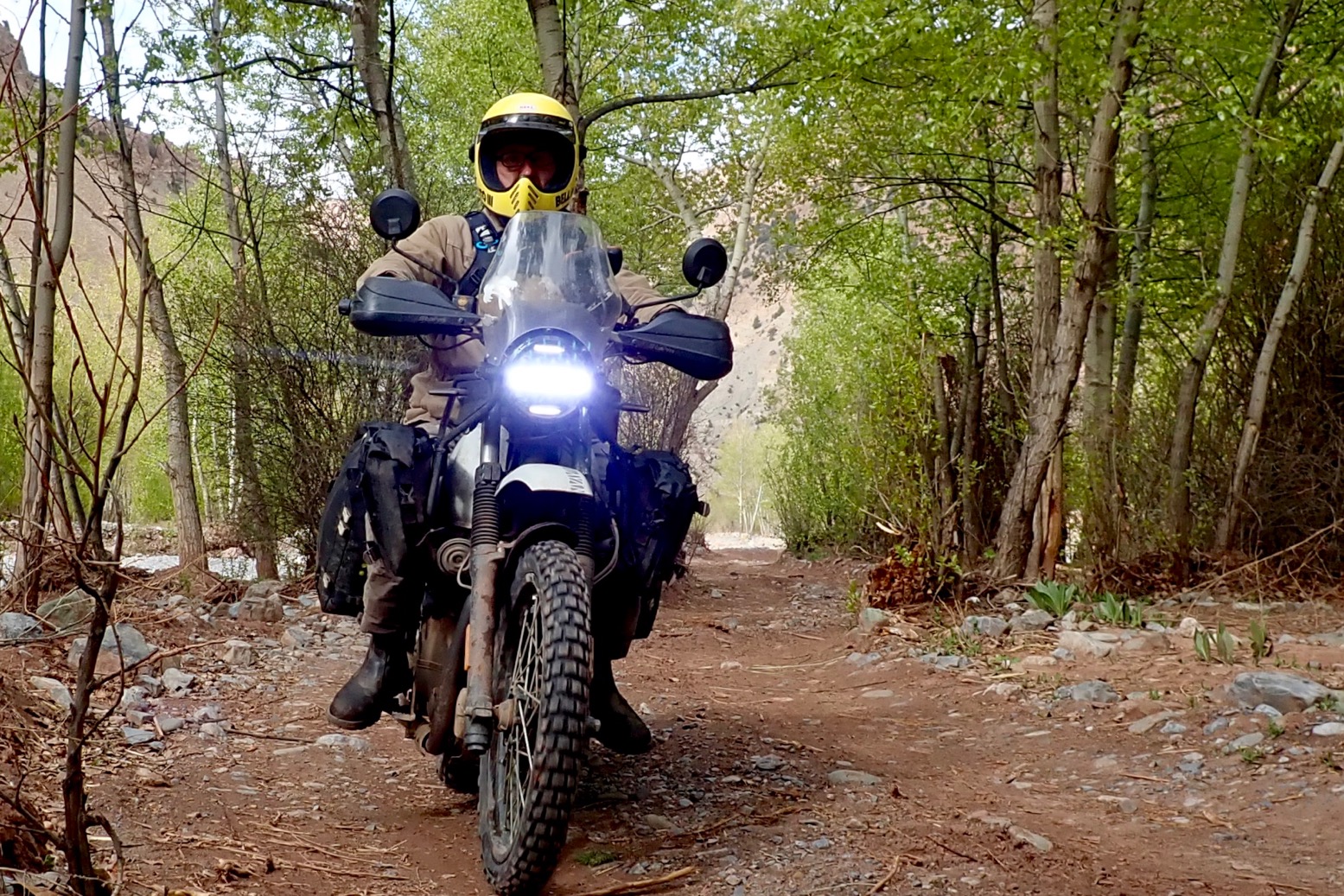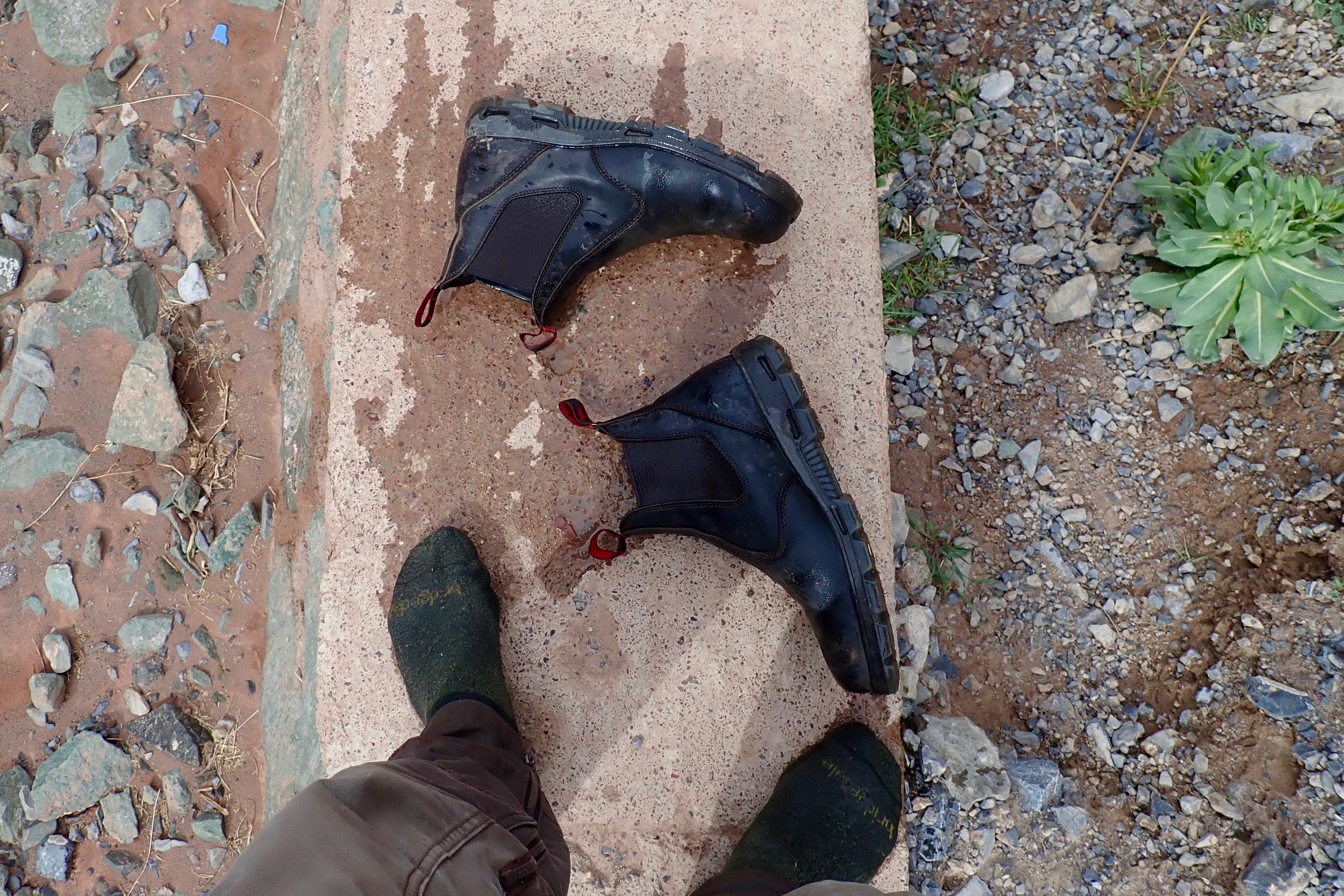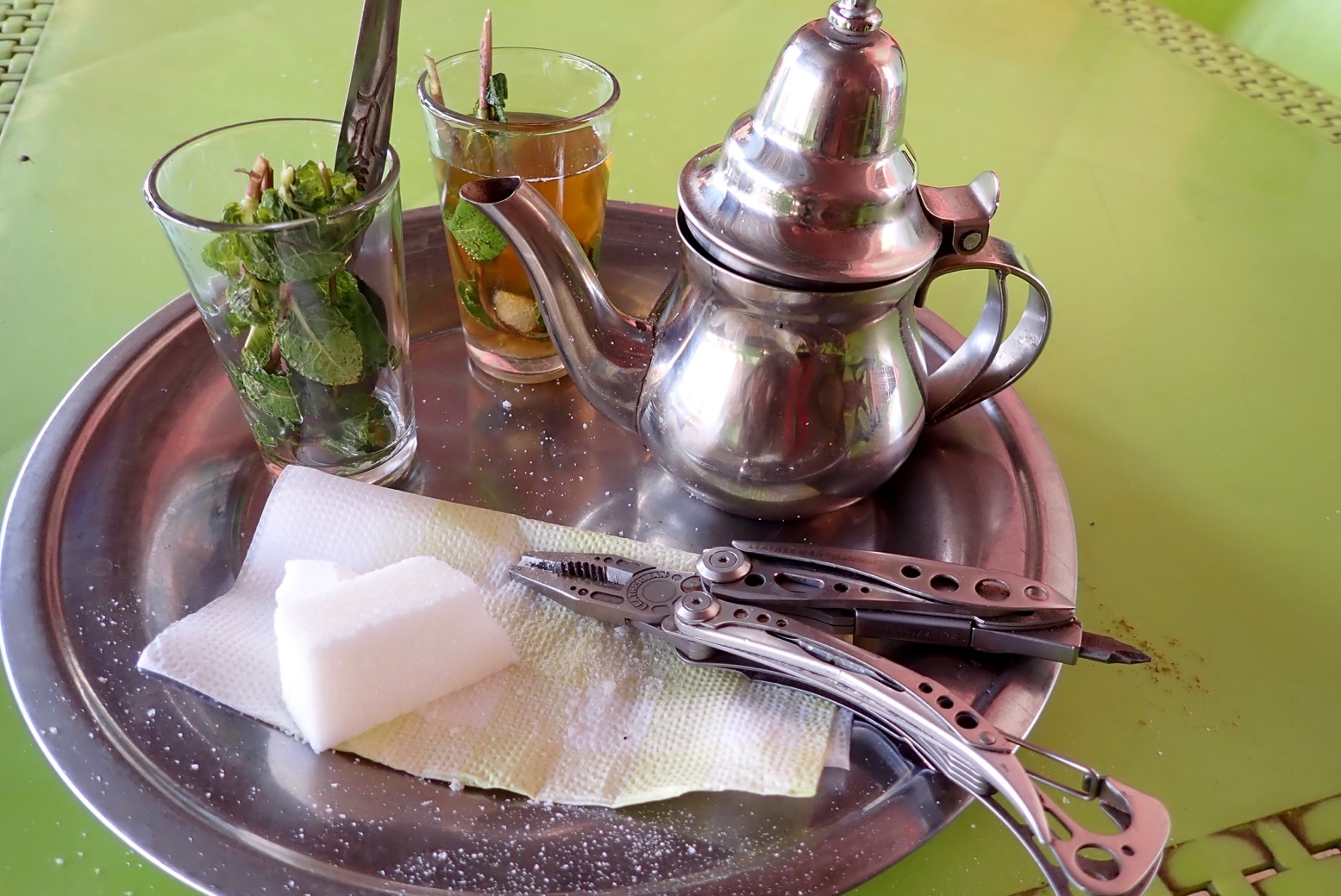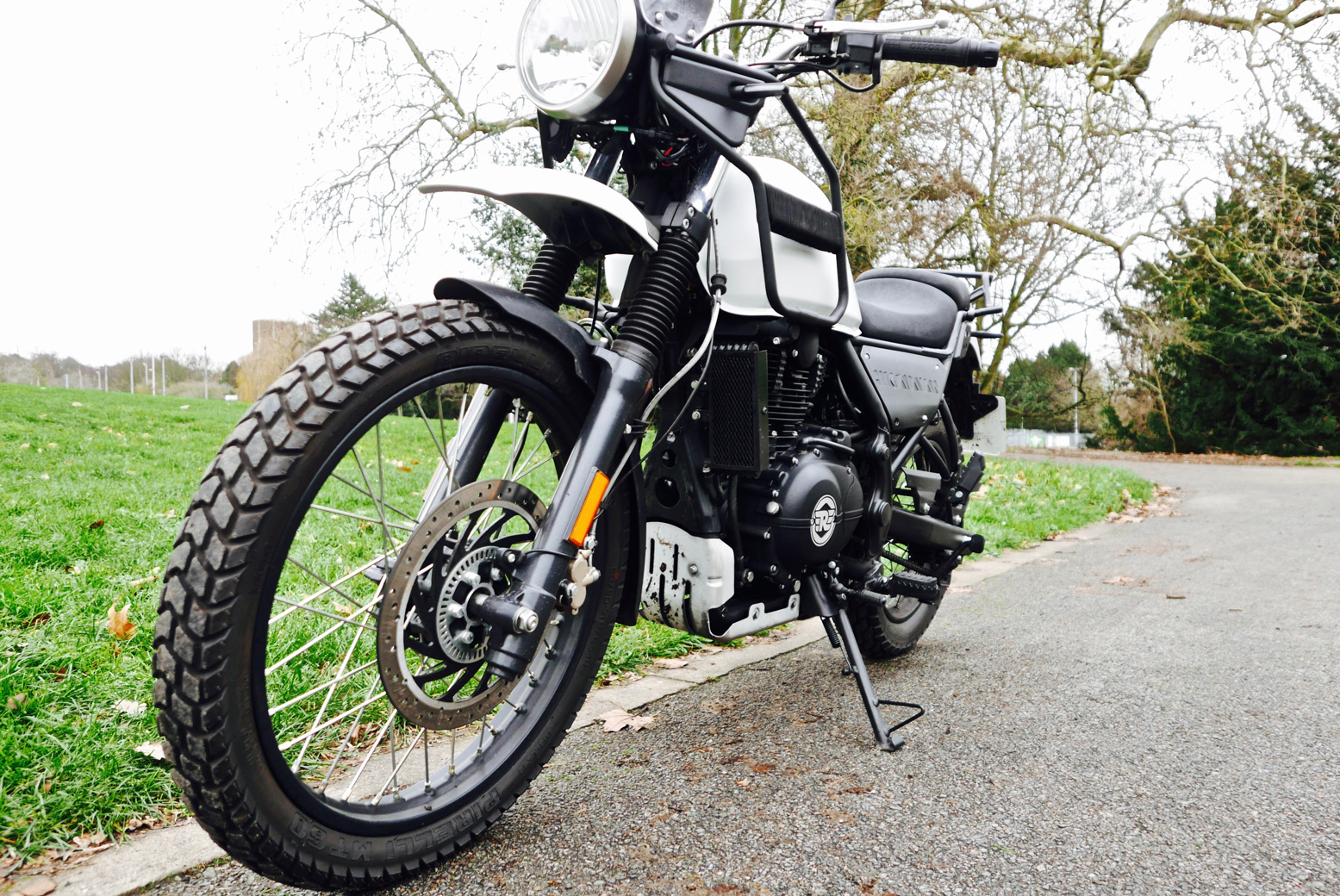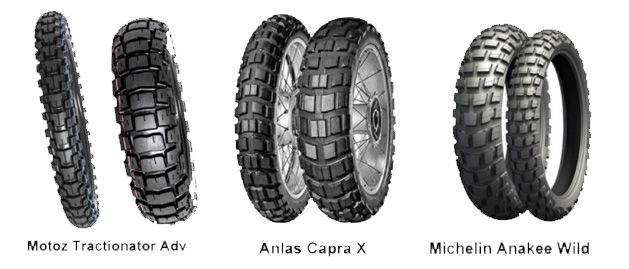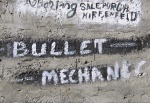Himalayan Index Page
Soft Baggage Comparison
The new OS22 pannier from Kriega is the mini version of their OS32 I tried on a WR250 a couple of years back. The OS22 has the same proportions up-down, left-right but is 40mm thinner, reducing each bag’s capacity by 10 litres. It also retains the same uabrasion resistant Hypalon casing on a 1000D Cordura shell impreganted with aramid webbing to resist slash and grabs. An alloy block allows you to wrap a cable lock round the bag for added security. Each bag folds out to a formed box shape, costs £215 and weighs a hefty but durable 2.6kg.
The OS22s just happened to be ideal for my Himalayan, destined for a similar trip through the Atlas and on into the deep south of Morocco.
![]() • Slim
• Slim
• Rugged, quality construction
• Easy removal from plate, or just lift out the liners
• Lots of exterior tabs for expandability or securing the bags
• Option to not use platform
![]() • Expensive
• Expensive
Most riders don’t seem too bothered, but I like a bike to be as slim as possible and ideally never wider than the bars. Whether splitting city traffic, riding against the wind, squeezing through a hotel door and not least, teetering along a narrow and gnarly mountain track with a big drop to one side – in all cases excessive width holds you back. Keeping away from the edge of a drop is instinctive and increases the margin of error, but stray too close to a cliff face opposite and you risk snagging over-wide panniers on a rock, losing your balance, over-correcting and taking a dive, just like that viral bike-in-a-boat video of a few years ago (below).
High and fat silencers can force racks to be annoyingly wide (especially when attempting to be needlessly symmetrical from the rear). Soft or hard, add a plain, box-shaped pannier and the bike can be half as wide as it is long, like the F650GS fitted with Enduristan Monsoons (right), or my all time favourite, the GS500 on the left.
On a travel bike, I feel panniers are best when ‘suitcase’ shaped: longer front-to-back than top-to-bottom and no more than a hand’s span wide. This helps centralise the weight but is an unpopular format because, presumably, it interferes with pillion riders. Many aftermarket racks don’t help either, being set too far back for optimal weight centralisation, as mentioned in this old post.
 With Kriega OS panniers, an HDPE plate or ‘platform’ in Kriegaspeak (left) can be bolted to a rack. You may think it just adds weight and expense. Both true, but a plate is actually a smart way to fit any rack. HDPE (think: kitchen chopping board) is great stuff, too: light, rigid and dead easy to drill or even just poke with a red-hot skewer. The Kriega plate and its adapter clamps have been designed to fit just about any round-tube, 18mm/¾” rack and offer a broad, grippy surface for the hypalon-backed OS bag to cinch up against. Making your own fitting to fatted or square tubed racks would be easy enough. The Kriega OS bags use a cunning anchor on and strap-up system to make a very secure fitting while enabling easy fitting or removal – a key element when on the long road. Strapping the hypalon-backed bag to the grippy plate surface spreads loads over a broad area too, meaning no failure-prone stress points.
With Kriega OS panniers, an HDPE plate or ‘platform’ in Kriegaspeak (left) can be bolted to a rack. You may think it just adds weight and expense. Both true, but a plate is actually a smart way to fit any rack. HDPE (think: kitchen chopping board) is great stuff, too: light, rigid and dead easy to drill or even just poke with a red-hot skewer. The Kriega plate and its adapter clamps have been designed to fit just about any round-tube, 18mm/¾” rack and offer a broad, grippy surface for the hypalon-backed OS bag to cinch up against. Making your own fitting to fatted or square tubed racks would be easy enough. The Kriega OS bags use a cunning anchor on and strap-up system to make a very secure fitting while enabling easy fitting or removal – a key element when on the long road. Strapping the hypalon-backed bag to the grippy plate surface spreads loads over a broad area too, meaning no failure-prone stress points.
Like the 32s, the OS22s can be hooked on and lashed down to the Kriega HDPE platform or plate (see above). It’s a very solid off-road-proof mounting system which I also found dead easy to use. But this time round, on the Himalayan I chose to use the 22s as plain throwovers, like Adventure Spec’s Magadans, Doing it this way meant that once the bags were lashed down securely to the bike, I found it less hassle to simply remove the waterproof, velcro-rimmed white liner bags to carry stuff indoors when not camping, rather than unrigging the whole bag. As such, a couple of shopping bag handles wouldn’t have gone amiss on the liner bags.
A rack is still needed to constrain any swinging and shuffling. I initially bought an Enfield rack from India but despite being cheap, I sold it unopened once I saw how heavy it was; it’s more suited to alloy cases. All I needed was something to support the bags, so Simon made me what I call C-racks (below) in one-inch tube. They’re only mounted at each end and are unbraced against so could bend in a heavy crash, but I tend not to do that so much these days.

Adjusting the strap length for the throwovers is easily done. A horizontal strap round the bag and rack kept it located and another (yellow) strap from the rear rack stopped the bags sliding forward. There are plenty of attachment points all over the outer bags to refine your strapping set up if not using the platforms, or of course to add additional Kriega bags.

It all worked well for me once I pinned down the strapping arrangement. Access was as simple as undoing or just loosening the two big hook straps then unclipping the side cinch-down clips. I never got to test the bags in prolonged rain, not did I test the rugged hypalon panels by sliding down the road. My load in the bags was about 15kg overall. The RHS pipe-side pannier was hitched high enough to avoid the silencer, but just in case, I had a long jubilee clip to attach some sort of metal heat guard round the pipe, had it been necessary.

Lomo Crash Bar Bags
Forty four litres may not sound enough for a month-long trip involving camping, but the Himalayan benefits from tank racks which are ideal for adding a pair of small bags like the tough, 7-litre PVC Lomos (£40 a pair). In this position they’re easy to access from the saddle, and up to a point protect your knees from an oncoming downpour or chilly wind. They also help give the bike a soft landing when you don’t quite swing your leg high enough while getting on or off.
Access is roll top with clip down sides, like the Kriegas. Two additional horizontal straps fix or pull the bags in, but I didn’t use them.

The combination of Lomo and Kriega gave me a massive capacity of 58 litres and meant no bag was ever jammed packed and I needed no bulky tailpack other than the trusty old Touratech zip pouch I’ve reused over the years from bike to bike. Add the small Giant Loop tank bag and my Himalayan always had room to spare. One drawback with several bags hanging all around the bike means there’s more to empty and take in to a hotel of an evening. But on the road having the load spread evenly across the bike is better for access and weight distribution.
The Kriega and Lomo bags were supplied free for testing.



